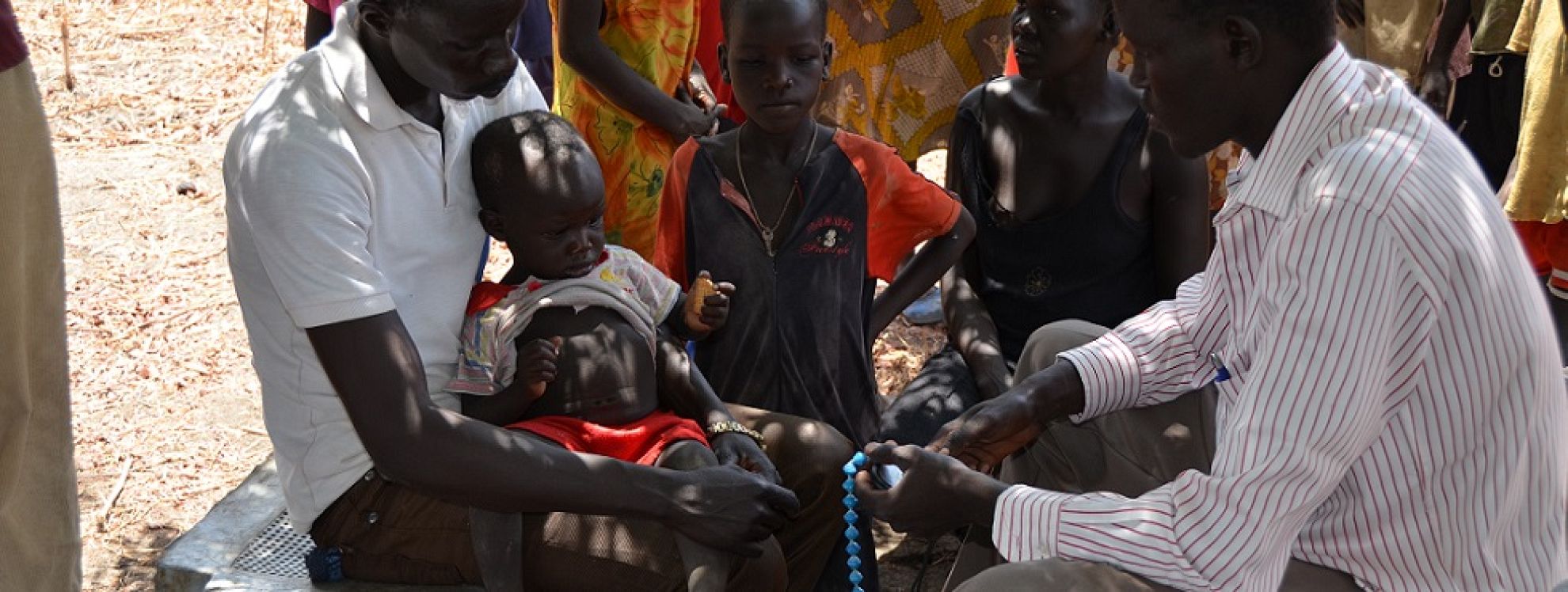
Sharing progress and lessons learnt from the pneumonia diagnostics project in South Sudan
31 July 2015Pneumonia is one of the leading causes of death in children under five in both Southeast Asia and sub-Saharan Africa. A large number of the children who die from pneumonia do so as a result of inappropriate treatment due to misdiagnosis of symptoms. In order to tackle the large number of childhood deaths from this preventable and treatable disease, ministries of health are investing in community health workers (CHWs) to deliver lifesaving diagnosis and treatment with antibiotics. Malaria Consortium’s pneumonia diagnostics research project aims to identify the most accurate, acceptable, scalable and user-friendly respiratory rate timers and pulse oximeters (POx) for diagnosis of pneumonia symptoms in children by community health workers and first level health facility workers in four low-income countries.
At a meeting in Juba, South Sudan, Dr Lena Matata presented on the pneumonia diagnostics project in South Sudan. She provided context on the burden of childhood pneumonia globally and in South Sudan, and introduced current devices available for diagnosis by community health workers (CHWs) – consisting of UNICEF ARI timers and counting beads.
The challenges in using these devices and the need for improved diagnostic tools for diagnosis of pneumonia at the level of CHWs and first level health facility workers (FLHFWs) – was discussed at length. The importance of non-invasive measurement of oxygen saturation levels in severe pneumonia was highlighted.
During the presentation, Dr Matata demonstrated how to use the diagnostic devices, which are currently being evaluated as part of the project. The different devices include:
- a revised UNICEF timer and counting beads for different age groups (under two months, 2-11 months, and 11-59 months)
- a simple mobile phone application to measure respiratory rate
- pulse oximeters for measurement of oxygen saturation levels.
Dr Matata also shared the feedback received from the CHWs as part of the formative research stage, which was collected through focus group discussions. The aim was to explore the current challenges faced by CHWs in diagnosing pneumonia at the community level and to hear their suggestions on how to make the tools more user-friendly and effective.
Learn more by reading the full article or by visiting the pneumonia diagnostics featured project page.
Country: South Sudan
Keywords: Digital strategies | Diagnosis
Related content
19 November 2014
Diagnosing pneumonia - determining the best tools for use in community settings
11 November 2014Pneumonia prevention and care available for every child is key to defeat world's #1 infectious killer of children
Latest news
- Malaria Consortium honoured by Ugandan government for contribution to combat malaria23rd April 2024
- International summit calls for AMR accountability in public health interventions21st March 2024
- Global SMC community celebrates new milestone at SMC Alliance Annual Meeting in Nigeria6th March 2024
- Scaling up key interventions could halve pneumonia-related childhood mortality13th February 2024
- Malaria Consortium and eGov Foundation join Mozambique’s national malaria programme to digitalise seasonal malaria chemoprevention campaigns8th February 2024
- World’s first malaria vaccine rollout launched in Cameroon22nd January 2024